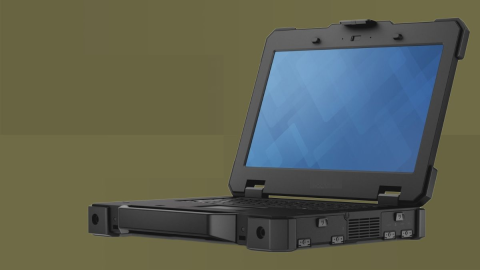How Distance Learners are Using Upverter to Learn Electrical Engineering Online

Upverter Education brings distance learners together to learn electrical engineering online.
Looking back on my own experiences as a student, I am amazed at the depth of subject matter in most electrical engineering courses. Today’s generation of engineering students is facing major challenges in accessing truly comprehensive courses on electronics design, especially now that so many schools are operating remotely. Distance learning in a hands-on subject like electrical engineering is already a major challenge, but students are using a unique distance learning ecosystem to learn electrical engineering online.
Today, the Upverter Education platform is providing students with online PCB design tools, course material, and a vibrant community of fellow engineers to make distance learning a more fulfilling experience. Students are doing much more than completing coursework, they’re building real hardware platforms and gaining experience the industry demands. Here’s what Upverter Education students are doing to build their skills and create impressive hardware designs.
The Upverter Education Platform for Distance Learning
The Upverter Education platform is a complete online learning experience for engineering students at multiple levels. Focusing on electrical schematic design and circuit board layout, the Classic Upverter platform contains a complete set of circuit board design tools students can use to learn the fundamentals of electronics design and circuit board layout. Best of all, these design features are available through a web browser, and students can collaborate in groups and with their instructors as they learn electrical engineering online.
What’s in Classic Upverter?
Classic Upverter’s online platform includes industry-standard circuit design features and CAD tools that are needed to take a new hardware platform from idea to a finished circuit board. Distance learners can access comprehensive courses on the following topics in electronics engineering:
- Design fundamentals
- Circuits and schematics design
- PCB layout
- PCB manufacturing
Students are already creating high-quality PCB layouts with the CAD tools in Classic Upverter, such as the buck-boost converter shown below.

Upverter DevX Teams
Because Classic Upverter stresses a collaborative design environment, it’s an ideal platform for students and professional circuit board designers who are learning or working remotely. Students and instructors are taking this to heart by forming Upverter DevX teams, where students work with each other to build new hardware using the design tools in Upverter. Groups of Upverter DevX educators are also using the sharing and collaboration features in Upverter to release their projects under an open-source license.
Upverter DevX Teams are leading design and innovation in a range of projects, including the following:
- Integrating Upverter into in-person lab classes
- A custom PCB and proposal for NASA’s CubeSat
- Teaching robotics at the high school level
- Encouraging diverse populations to pursue STEM as a career
Classic Upverter’s design capabilities are perfect for learning the foundations of electrical engineering and circuit board design online, but there is much more that goes into electronics design. By integrating with other design and manufacturing platforms, Upverter Education students can access a much broader range of resources for learning electrical engineering online.
Expanding the Distance Learning Ecosystem for PCB Design Students
In order to broaden access to Upverter Education to a greater number of schools around the globe, Upverter Education is now integrated with the browser-based embedded systems design tools in the new version of Upverter (previously known as Geppetto). In addition, both platforms are integrated with manufacturing partners, allowing students to place their designs directly into manufacturing. Everything needed to take a board from idea to production can be found within these platforms.
New Upverter Integration
The browser-based design tools in New Upverter allow students to create embedded hardware platforms in a drag-and-drop interface. Students can use New Upverter to place pretested hardware modules into a board, and New Upverter will create the required electrical connections automatically. Students can focus on engineering functionality into their designs and focus on form factor, rather than getting mired in overly complex PCB design tasks.
Embedded systems require software and firmware development, and there is plenty of open source code students can use to program their new devices. These platforms and open source support are also being used to teach embedded firmware/software development. Students that use the New Upverter platform for board development can then push their designs into Upverter for further customization and prepare their boards for fabrication.
Push to Manufacturing in PCB:NG
Once a design is finished, the integration between these three platforms allows each tool to share design data and begin the manufacturing process:
- Push from New Upverter to Classic Upverter: Students that design a board in New Upverter can push their design into Classic Upverter and download CAD files for their PCB. They can take their designs with them into other CAD programs, including Altium Designer.
- Ship it from New or Classic Upverter: Students can get a better understanding of the process required to manufacture their new designs by instantly sending a board into fabrication. Both New and Classic Upverter have made this process seamless.
This combination of design and manufacturing with Upverter platforms guides students through the entire electronics design and production process. This is exactly the type of hands-on experience the electronics industry expects from the education system and demands from engineering students.
Strategic Partnerships
To continue expanding design capabilities for students, as well as expand access to these tools, Upverter is committed to forging new strategic partnerships with other leading companies in the electronics industry. These partnerships are building awareness of the Upverter Education ecosystem and giving students greater access to resources to help them learn electrical engineering online.
The best part of the Upverter Education ecosystem is accessibility: the design tools in Upverter are available at no cost to instructors, and they can be used as part of larger online electronics engineering courses. The Upverter Education Engineering Essentials course is unique in that it is a standalone online course on PCB design, and it can be used at multiple levels. Start your students with the Design Fundamentals for a basic introduction to electronic design.
Explore the Upverter Education Teachers Guide for a quick start overview on how to utilize Upverter Education with your students. It’s free to sign up and your students can complete course modules at their own pace.








